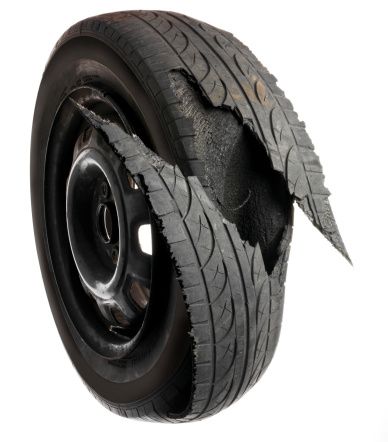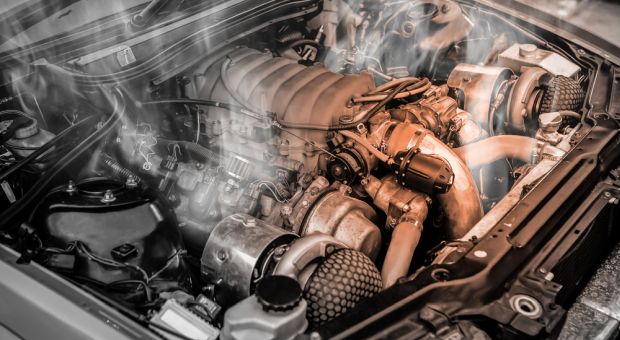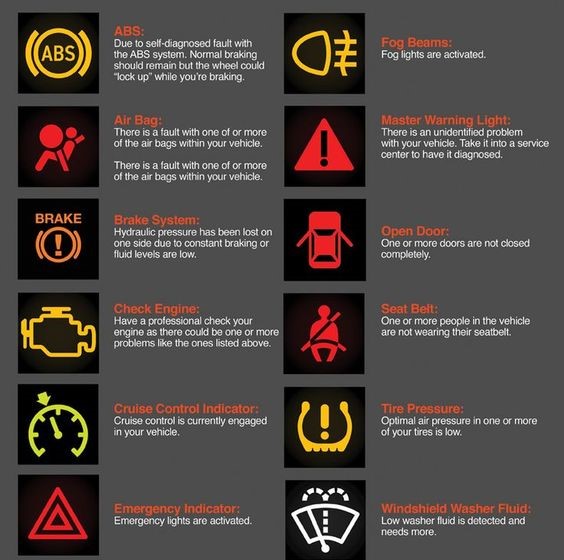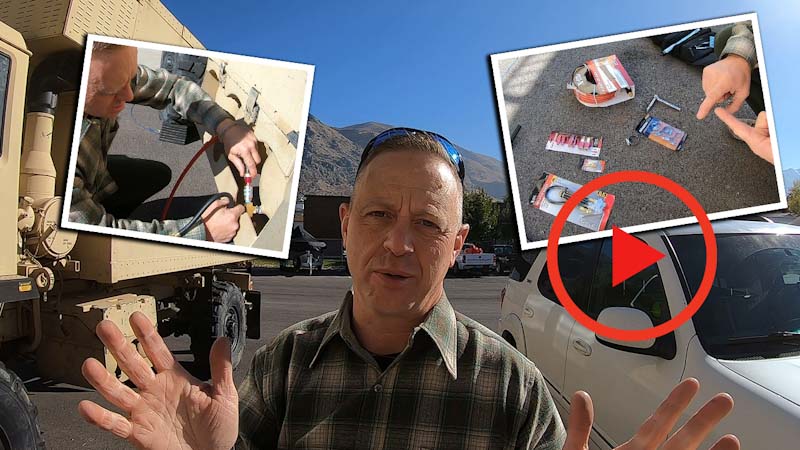I’ve driven a lot of miles in my life; I mean a lot of lot of miles.
Ever since I turned 16 and was able to get a driver’s license, I’ve had a steady succession of cars. I can’t even count how many. I’ve also done a lot of traveling, so I’ve had just about as much time to encounter problems with my cars and have to deal with them as anyone.
I guess I should add that I tend to drive older vehicles. There’s a saying that you’re either making car payments or you’re paying for repairs. While there is quite a bit of truth to that statement, I’ve found that making repairs to cars is much cheaper than making car payments, especially if you do the work yourself. While I have a pretty good shade-tree mechanic now, who does most of my work, I did it all myself for a lot of years. All, in this case, includes everything up to engine rebuilding and replacement.
Portable Device Generator – Learn How To Build Your Own Energy Generator!
Through this, I’ve noticed one striking truth… my vehicles rarely have problems at a convenient time or in a convenient place. I mean, why can’t a car break down in the driveway? Why does it have to happen far from home? It’s a whole lot easier to fix it, sitting in front of my garage, where I have all my tools to work with, than having to figure out how to drag the thing back home.
This has led me to always keep a tool kit in my car. While I don’t have everything in the car, I do have a ratchet and sockets, wrenches, pliers and screwdrivers. That gives me the ability to do most repairs, no matter where I am. I’ve replaced a head gasket with that set of tools; although I did have to borrow a torque wrench from the auto parts store to properly re-tighten the head.
I don’t care if you’re going out of town to go fishing for the weekend or you’re on a bug out, the possibility exists that you’re going to have problems along the way, forcing you to make some sort of emergency repairs. If you want to wait for a tow truck and pay the garage to do your work, that’s fine; but what are you going to do if there’s no tow truck available or the garage is closed? You either fix it yourself or you do without.
So let’s take a look at a couple of the most common vehicle problems and the hacks we can use to make an emergency repair, for those times when you don’t have what you need.
Tire Problems
Everyone is bound to have a tire go bad on them sometime. Tires can go bad in one of three ways:
- They can have the air leak out
- They can explode
- The tread can wear down to the point where the belts are showing
Any of those three mean that the tire is destroyed. The question is, what can you do, so that you can get where you’re going to?
Tread Wearing Out

This is one of the easiest problems to solve, if you keep a roll of duct tape in your vehicle. All you need to do is put several layers of tape over the bald spot on the tire. Stop every once in a while (like every 20 miles) to check it and add more duct tape as necessary. I’ve driven over 100 miles to get to somewhere I could buy a tire this way.
Tire is Flat
Flat tires are annoying to say the least. If you’ve got a good spare and all the tools to change it, it’s nothing more than a nuisance. But if you don’t, you’re stuck, right? Wrong! There are still ways of solving the problem.
If you don’t have a can of Fix-a-flat in your car, Coka-Cola can be used to make your own imitation “fix-a-flat” to seal your tires and allow you to fill the tire with air again. Mix the Coke with powdered dirt, making a slurry out of it. Then comes the tricky part – getting it into the tire.
To start, remove the screw or nail and rotate the tire so the puncture is down. Then, if the tire has broken free of the rim, you can just stuff it in the crack, then fill the tire with air. If not, you’ll need to remove the valve from the inside of your valve stem and put the slurry in through there. If you have a drinking straw, you can suck the slurry up through the straw and blow it out into the valve stem. Once enough is in, screw the valve back into place and fill the tire with air.
But what if your tire is so bad, that there is no way it will hold air at all, as with a blown tire? In that case you can still use the tire, cutting the sidewall in a couple of spots and filling it with grass. Pack as much in there as you can. You won’t be able to get the tire to the normal inflation point, but you will be able to get it to the point where you can drive the car slowly to someplace you can find a tire.
No Jack in the Vehicle
If there is no jack in the vehicle, you might have some trouble changing the tire. A man named Archimedes came up with a solution to this problem, over 2,000 years ago. It’s called the lever. All you need to do is put a good sized rock right next the car. Then, find a tree branch to use as a lever. You’ll need a couple of people to push down on the far end of the branch, lifting the car, while you change the tire. Be sure to work fast though, before they get tired.
I actually had to do this with a Jeep once in the Army. While it works, the lighter the vehicle is, the easier it is to do. I would never have wanted to try it with my motorhome. Make sure your rock is big enough so that it comes up as far as the vehicle’s body and get as long and strong a branch as you can find.
Putting a Tire Back on the Rim
One really odd problem you might have is the ability to jack the car up, but not get the wheel off. Sometimes, the lug nuts are on so tight, you can’t remove them. Other times, the wheel is rusted to the hub. Whatever the reason, the solution could be to change the tire by putting another tire on the rim that is already mounted to the car.
This is a bit tricky to do, but not all that hard, if you have two pry bars. Watch someone at the tire shop do this sometime or catch a video online so you know the technique.
The next problem is getting the tire to seal to the rim. In tire shops, they use a lubricant for this. You obviously won’t have that available to you; but there are several thing you can use, like soft-drinks. But the best thing to use is anti-bacterial hand cleaner. It makes a good lubricant and as it dries it seals the joint between the tire and the rim.
Sometimes, the tire needs a little help pushing up against the rim, so that it can seal and not let all the air escape. This is easily accomplished by tying a rope around the diameter of the tire and then using a stick for a windlass, compressing the tire and causing the sides to bulge.
An Overheated Car
Cars can overheat at the strangest times. The car’s engine produces a lot of heat as it operates. If the engine can’t get rid of that heat, it overheats and won’t run. Enough of that, and the engine can be seriously damaged.
If the engine overheats, you can be sure that you will need to add water. Even if all the water didn’t leak out, some will have leaked out in the form of steam. More will probably leak out as you try and fix the problem that caused it to overheat. So no matter what, you’re going to need some water.
The first thing you have to do is pop the hood and figure out where the car is leaking water or steam. You’ll probably have steam coming out of the overflow tank, but where else? Where it is leaking from shows you where the problem is and what you need to fix. Possibilities include:
- The radiator
- The radiator hoses
- The car’s cabin heater (under the dashboard)
- The water pump
If you don’t see water of steam coming out of any of these, but still see it coming out of the overflow tank, then the problem is probably the thermostat. This is located in a housing where one of the radiator hoses connects to the engine block. There are usually two small bolts holding it in place. In addition, there’s a gasket, which is probably glued in place.
Before making any sort of repairs to a hot engine, allow it time to cool. It will need at least 45 minutes. If you can’t grasp the upper radiator hose, without it being uncomfortable, then you need to give it more time to cool.
Emergency Hose Repairs
The most likely hoses to go bad are the radiator hoses. Those are most likely to go bad near one end or the other. This gives you an easy way of temporarily fixing them, if the hose is long enough that it has some slack in it. Simply cut off the bad portion of the hose and reattach it with the hose clamp.
If the location of the leak or the length of the hose doesn’t allow this, then your best bet is to patch it with duct tape. But before you do that, be sure to clean the outside of the hose thoroughly, so that the tape can stick. If you have a knife, scrape the surface of the hose to roughen up the rubber slightly. Then wrap several layers of duct tape tightly around the hose.
To make the hose patch even better, put a hose clamp over the duct tape bandage, tightening it up to act like a pressure bandage on a bleeding wound. If you don’t have a hose clamp, you can use a piece of thin rope (like paracord) making a loop and then using a stick as a windlass to tighten it.
There’s actually a tape which is made for this, called Silicone Rescue Tape. It’s designed to withstand temperatures of 500°F and pressures of 700 PSI. That makes it stronger than duct tape. It might be a good idea to throw a roll of it in your trunk.
In the case of other hoses, like the hoses that run from the radiator to the heater core, all you have to do is disconnect the hoses. Take the one that does not have a leak and loop it to connect from the radiator, back to itself, bypassing the heater core. While you won’t have heat in the car, you will have a working car.
Emergency Radiator Repairs
Generally speaking, problems with the radiator will be nothing more than pinholes, or more likely, only one pinhole. However, that first pinhole will be an indication of more to come. So, while you may be able to fix the radiator well enough to keep driving for a while, even for months, you will need to replace the radiator core fairly soon.
As far as I’m concerned, the best radiator sealer is that powdered stuff they sell in a plastic tube. But if you don’t have that, you can use a makeshift substitute; black pepper. Finely ground black pepper will find its way to the pinhole and jam in the hole swelling to fill it. Another way of doing this, if you don’t have access to black pepper is with a raw egg. Just beat the egg and put it in the radiator (not the overflow tank). As with the pepper, it will find the hole and then cook in place, sealing it.
Emergency Thermostat Repairs
The thermostat exists for the purpose of controlling the flow of coolant through the engine and radiator. You can actually run the car without it. The only “bad” thing that will happen is that the engine will warm up slower. But then, that’s a whole lot better than it warming up too much.
Here’s the problem. You can’t take the thermostat out of many of the newer cars and still have the gasket seal. So what you have to do is take the thermostat out, break it to take the plunger out of the center of it (just requires cutting a couple of soft metal stringers) and reinstall the thermostat and gasket.
If the gasket is damaged, you can make a temporary gasket out of silicone gasket sealer, silicone tub sealant, cardboard or chewing gum. Just chew the gum enough to get the gritty sugary texture out of it.










Gordon | April 9, 2019
|
I’ve always driven old cars, and had similar situations. However I have almost always had serious failures happen in my driveway, for some amazing reason (karma?).
But you lost me with the advice about tires. You didn’t even mention keeping a cheap tire inflator (compressor) in the car, that plugs into the cigarette lighter, or has battery clips.
Keep some fixaflat in the trunk. Dirt, coke, pepper? Cutting sidewalls? Might just as well just drive on the rim. Keep jumper cables in the trunk. Drive a standard so you can push-start the car.
I did once limp home with a gang on a Sunday pakky run to NH (in the blue law era in Mass). We got a flat, no spare, but near a gas station with a free air hose. There was a hole in the tread. Stuffed bubble gum in it. It held about 18 PSI, and we drove home slowly, 30 miles or so.
I’d say a prepper ought to have the tools you mentioned, but also that fixaflat, compressor, jumper cables. Maybe a rope too. If not, you are not prepared!
Bill in Idaho | April 9, 2019
|
Hello, Bill. Good Article – I like your writing style – Good, Solid, Useful Ideas Without a Lot of “Fluff”. I have One Comment each on Tires, and on Engine Cooling. – 1.) About tires – You can Avoid about 80-90% of tire problems by following two simple Rules. First, make sure you choose Brands carefully – Made in the USA: buy Only UniRoyal and their “Sub-Brands” -or- Hercules and their “Sub-Brands”. Avoid Goodyear and All of their “Sub-Brands” (i.e., Walmart, et al), General, and Most “Store” Brands. Manufactured outside of the USA: Make SURE that they are made in Canada, Taiwan, or Thailand – Mexico makes All use US Name Brands. Second, keep your tire pressures at the Correct (Recommended) Pressure Level – check all of them weekly (or more often), Including the Spares. I ALWAYS Carry 2 spares, 2 jacks (One “Floor Jack” and One “Bottle” jack, Plus a “Cross” Wrench and “Cheater” Pipe. 2.) If your vehicle has Overheated Once – It will overheat Again – and Soon.- UNTIL you have Permanently Repaired the Root Cause. Punching out the core of the Thermostat is fine in the summer. When cool weather approaches, Get that Thermostat Replaced ! Also, I will place money on a bet that over half of the cars on the “Road” have their “Burp Tanks” Empty and Dry – and have been for a long time. Sure – Russian Roullett is fun – IF you win !
Bob L. | April 9, 2019
|
The best vehicle for either bugging out or for after when the SHTF is one built before computer controls of any kind were introduced. It’s impossible to diagnose or repair the vehicles, including farm tractors, made during the last 20 years without a laptop or specialized diagnostic equipment. If things get so bad and civilization itself falls apart, even fuel for a 1950’s vehicle would become impossible or extremely hard to find.
Armin | April 9, 2019
|
Good article, Bill. Some good basic ideas for emergency repairs. Like you, I’ve also driven a “lot” in my life. Something like 2-3 million miles. I’ve had a lot of interesting experiences. One time I had a clutch go on me in Ann Arbor Michigan. Had a LONG drive to get back home. It can be done. Stop lights become interesting. I’ve always tried to do as much of my own repairs and maintenance on my own cars as I could. One time I had a rad hose go in the middle of summer pretty close to home. Car did make it home but I obviously warped the head. Next day car ran fine but it may as well have been a steam engine with all the steam coming out of the exhaust pipe. Driving like that drained the rad VERY quickly. Have also driven without a speedo. Had a tach so I learned to match the revs in the correct gear to the speed I was supposed to be driving. Worked fine until I was able to afford a new speedo. I was driving the old man’s car on the back roads when I was 14 or 15. T’ree on the tree. Took to driving like a duck takes to water. Used to love driving. Not so much anymore. Not fun anymore. Thanks for the ideas.
SkiptheBS | April 9, 2019
|
Black pepper for radiator repairs works only with very tiny holes. Tried it on a trip through S GA and the radiator still had to be refilled frequently from the alligator-infested river which runs through Fargo, Ga and beyond. YouTube may have videos on the gators.
I’ve heard that oatmeal will work but that requires a radiator rod-out in addition to normal repairs.
I noticed that broken belts were not addressed. A pair of pantyhose, cut down and knotted properly, will get you to the shop. I have seen a broken accelerator cable hack using a man’s belt attached to the linkage, looped to a rope, and the rope run through the gas pedal opening. Driver drives, passenger pulls belt to accelerate or slacks off to slow down.
Second the motion on old cars and trucks. I love a roomy engine compartment and simple construction. Oldies may need more repairs but the mechanic has a much easier time fixing them.
red | April 11, 2019
|
Good stuff to know. My old pastor always called my cars and trucks miracle vehicles because without prayer, they wouldn’t run 🙂 The truck I use now is in good shape, thank God. But, I miss that old ’57 International, the old Geo, and others that were fun to have and ran well, so long as I used a little fix-a-flat in the balding tires and carried a few gallons of water in case they needed it. BTW, when I got this truck, an 8-cylinder, I got 17 MPG. Using Lucas with every fill-up, it’s close to 22 MPG. And, I always buy the cheap gas. Lucas does the rest, even keeping the spark plugs clean and so on. niio! red
Sparkle Dee | October 2, 2019
|
With an older car, it would make sense to have a spare set of distributer points, and a timing light. Get one while they are still available! Gaskets of most types may be cut from leather. when you cut that large piece of leather, leave a nice inch edge of uncut leather to allow for LARGE gaskets to be made if they are needed. Buy the silicon sealer meant for high heat to give you more versitility for use.
An extra set of spark plugs,, belts and maybe a carburetor rebuilt kit would be smart. Keep bearing lubricated and wash off excess salt and mud underneath. THat will extend the life of your primary vehicle. I wish you all success in your endeavors. Remember my kingdom for a horse shoe nail!
karan joshi | October 12, 2020
|
I feel strongly about it and really like mastering more on this subject. If feasible, as you acquire experience, would you mind updating your blog with much more information. It is very helpful for me. thanks for sharing amazing information.